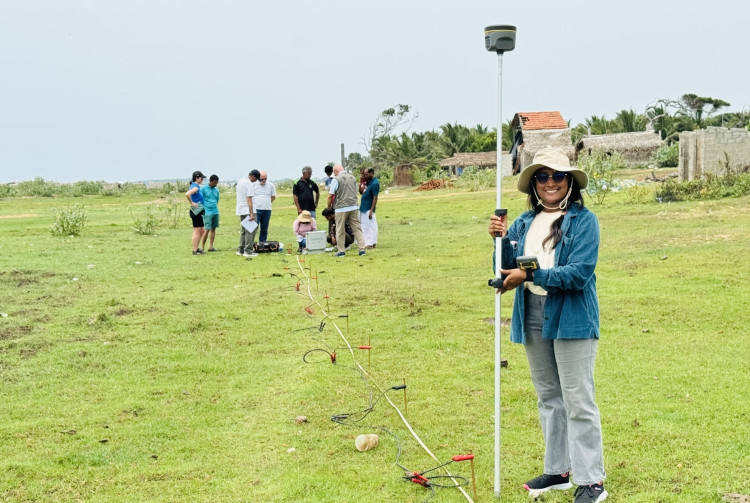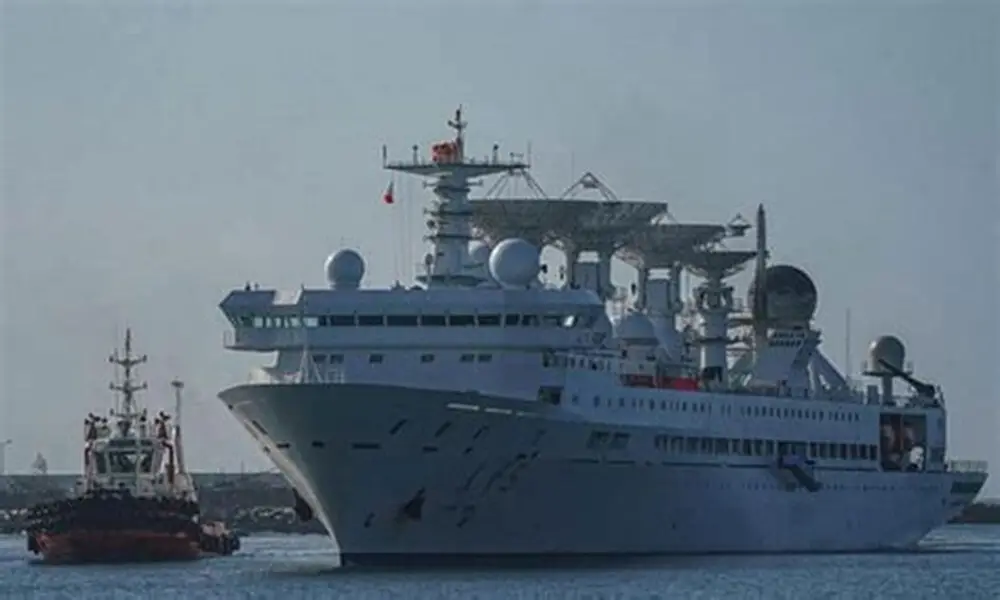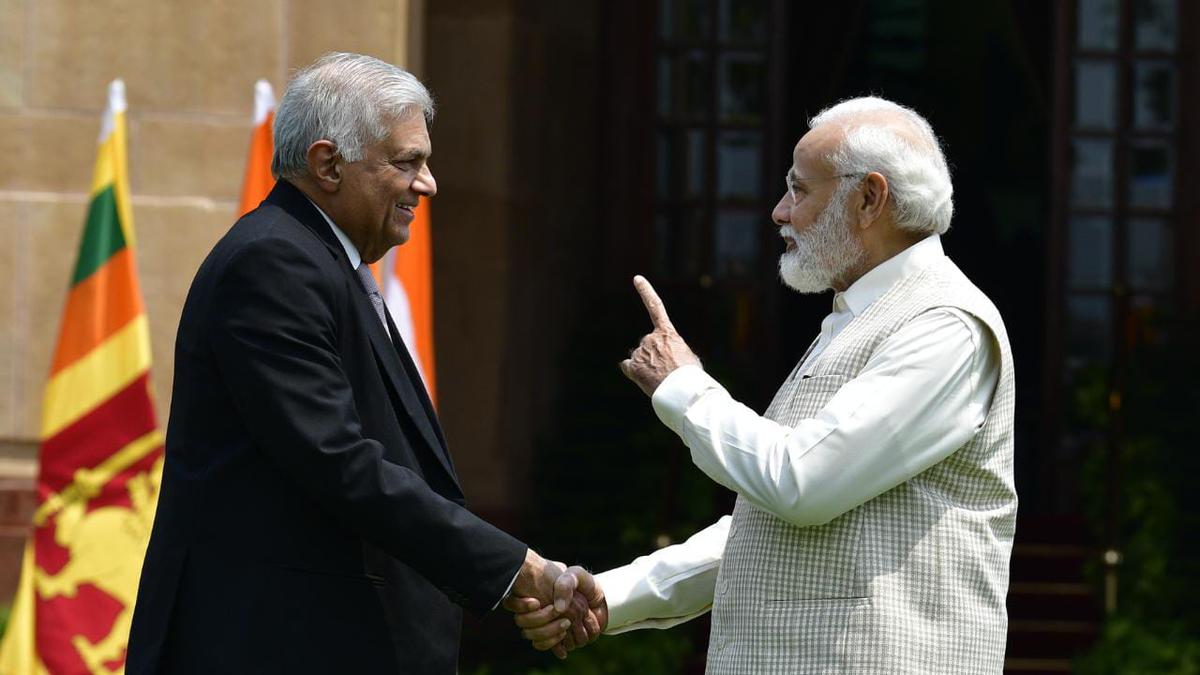A few environmentalists, including the Bishop of the Diocese of Mannar, filed a fundamental rights petition in the Sri Lankan Supreme Court against Adani Green Energy’s proposed 250 MW Mannar Wind Power Project. However, the question arises as to why environmentalists who claim that Adani Group’s wind power project is causing environmental damage are silent about the nuclear installation in Sri Lanka. Is wind power more harmful than nuclear power plants?
In June, the International Atomic Energy Agency’s (IAEA) team of experts concluded a seven-day safety review of Sri Lanka’s selection process to identify potential sites to build its first nuclear power plant. The IAEA identified one of the candidate sites in Pulmoddai, near the Trincomalee region, as suitable for the nuclear power plant.
In February 2023, Cabinet Spokesperson Bandula Gunawardena unveiled the government’s moves on this “death wish.” In Bandula’s words, “This will be a historic decision and a milestone in Sri Lanka’s history to address the power crisis via nuclear energy.” Initially, it was perceived as a multibillion-dollar Russian project. The Atomic Energy Board stated in the Sectoral Oversight Committee on Energy and Transport that if everything proceeds according to plan, Sri Lanka could construct its first nuclear power plant by 2032 with Russian technical assistance. However, China’s National Nuclear Corporation (CNNC) is trying to explore opportunities for investment in this project and has submitted a proposal. China and Russia declared a “no limit” partnership in February 2022. If Trincomalee is the location for this project, China will try to seize the opportunity.
The desire for nuclear power in Sri Lanka is equally dangerous. If nuclear reactors explode, the consequences are enormous. One of four reactors at the Chernobyl nuclear power plant in the Soviet Union, built in 1977, exploded and burned in 1986. According to the studies conducted by scientists over the last thirty years, the zone around the former plant will not be habitable for about 20,000 years after the incident. Scientists estimate that the explosion mixed more than 30 per cent of the 190 metric tons of uranium with the atmosphere, prompting the Soviet Union to evacuate 335,000 people and establish a 19-mile-wide “exclusion zone” around the reactor to mitigate the impact. Following the explosion, a United Nations team of scientists assessed the impact. More than 6,000 children have developed thyroid cancer due to radiation from the reactor explosion.
The area where the nuclear reactor exploded is now Ukraine’s border with Belarus. This resulted in the permanent loss of homes for 220,000 people in the area and the permanent unusability of 4,420 square kilometres of agricultural land and 6,820 square kilometres of forest land in both Ukraine and Belarus, known as the Read Forest. This Soviet disaster resulted in an estimated loss of 235 billion dollars. In 23 per cent of its entire land area, Belarus discovered contamination. In 1991, Belarus spent 22 per cent of its total budget on recovery.
Given this background, how relevant is a nuclear power project for a small country like Sri Lanka—a country already economically bankrupt with high debts and also far behind in the technological know-how to maintain nuclear reactors?
In 2010, there was a proposal to establish a nuclear power plant in Sri Lanka. The then-President Mahinda Rajapaksa had shown interest in setting up such a nuclear reactor with the help of South Korea. That effort was later abandoned. Is nuclear energy green energy? Prof. S.R.D. Rosa, the Chairman of the Sri Lanka Atomic Energy Board (SLAEB), affirms that “nuclear energy is a clean and green energy source that does not release toxic gases, but it is not without its drawbacks”.
However, according to I.M. Dharmadasa, Professor Emeritus, Sheffield Hallam University, United Kingdom, and (ex-President of APSL-UK), nuclear energy is “not green energy.” It is not a “renewable energy source,” like solar, wind, or biofuel.
Nuclear waste processing will have to continue beyond the lifetime of the plant, but Sri Lanka has neither the facilities nor the know-how to carry this out, Dharmadasa added.
Sri Lanka has already reached a state of economic bankruptcy due to its overwhelming debt burden. It was only because of India’s prompt assistance that Sri Lanka did not become a country of human tragedy. With such a background, why borrow again to build a multibillion-dollar nuclear power plant project? If allowed, it will be another “debt trap.” From the expert’s point of view, nuclear plants for energy production are highly appropriate for well-developed countries with established high security and discipline, like the US, Russia, China, and India.
Radioactive waste from nuclear power plants is another major challenge for Sri Lanka. Since Sri Lanka is small in land mass, it is very difficult to find a proper site for nuclear waste disposal. Some may believe that the country making the investment can support the removal and dumping of radioactive waste on its land. For example, if China invests in the power plant project, it should also support waste removal and bring it back to China. This is another warning sign because, for example, if China or any other country takes responsibility for disposing of nuclear plant waste, the entire nation will fall under their sway.
On one hand, the idea of the nuclear power plant is based on resolving the emerging energy needs in Sri Lanka, but on the other hand, it is geopolitically more complicated. If the government unlocks the door to Chinese investment in this project, it will drag the country into geopolitical rivalries. Given this context, identifying Trincomalee as a suitable location for this project goes beyond a mere energy necessity. China has been actively exploring ways to expand its presence in Sri Lanka’s northern and eastern provinces, especially in Trincomalee, known as the “strategic jewel.”
China will undertake this investment if the government allows it. For China, this is equivalent to “fruit slipped into a bowl of milk.” India is trying to boost investment in Sri Lanka’s north and east. The connectivity between Sri Lanka and India in different areas—maritime, air, energy, trade, economics, and people-to-people—is receiving more attention, particularly the oil pipeline project between Trincomalee and South India, which is being considered. As an immediate neighbour, India’s interests in Sri Lanka’s north and eastern parts are legitimate and necessary because there is an inescapable bilateral agreement between the two countries. Trincomalee’s development and security are part of the Indo-Lanka accord. India can never compromise on this matter. If left to do so, it will plunge India’s national security into darkness.
Another fact is that nuclear plants represent a very real terrorist target. Following the September 11, 2001, terrorist attacks in the US, several Western nations have introduced combat air patrols to safeguard the airspace around reactors because the nuclear power plant is highly vulnerable under the terrorist target. Sri Lanka learned from the Easter Sunday attack. ISIS sleeper cells in Sri Lanka remain an unanswerable question.
Given these factors, Colombo should permanently abandon the idea of a multibillion-dollar nuclear power plant in Sri Lanka due to its economic, environmental, technical, and geopolitical risks.




